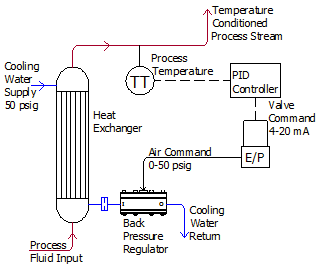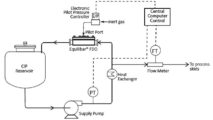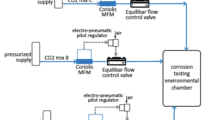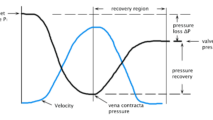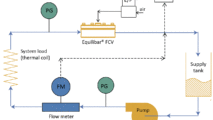NOTE About this page
Equilibar valves are used today to solve many complex flow control applications. This page shows the early learnings of applying an Equilibar valve to control flow and is retained for historical archive purposes.
For the latest information about Equilibar flow control valves
visit our updated flow control page.
One of the most common process control application is that of controlling fluid flow through a jacket or heat exchanger in order to keep a secondary fluid at the desired temperature. High resolution flow control valves are required to keep precise temperature.
For example, hot or cold water is throttled through the shell side of a heat exchanger to bring a chemical stream to the target temperature before entering a reactor. Or cooling water is throttled through HVAC coils to control the temperature of an air stream.
The Equilibar® precision fluid control valve is an alternative to a traditional flow control valve in this application. Let’s compare.
Typical process schematic
The schematic at right shows the use of a traditional globe-style flow control valve on a cooling water stream to maintain the primary process fluid at the desired temperature. The temperature of the primary stream is used as the process variable (PV) to a PID loop and the control output (CO) is the command to the flow control valve on the secondary cooling water. An electronic pressure regulator (E/P or electro-pneumatic transducer) is used to relay the CO to the diaphragm-style pneumatic actuator on the globe valve.
Pressure curves showing typical dP conditions
The pressure curve at right shows the various pressure relationships as the flow increases from 1 to 10 GPM. The Pump Curve shows how a traditional pump output pressure might vary with increasing flow. Even if the cooling water was pulled from a common header, some droop would be experienced due to friction in the delivery piping. The lower black line shows the increased friction through the heat exchanger. The red area shows the excess pressure which must be consumed somewhere in order to control the cooling water flow at the various load conditions.
This simple relationship is repeated with slight variations for nearly every flow control application throughout industry.
Limitations of traditional flow control valves
Flow control valves typically have one of several common formats, such as globe style with rising stem, or quarter-turn styles such as butterfly or ball valve. Pneumatic diaphragm actuators have typically been used with rising stem globe valves, while pneumatic piston actuators with rack-and-pinion dominate the quarter turn styles. Electrically motorized valves are becoming more popular with the quarter-turn applications in recent years.
While these designs work well for most applications, they have a finite resolution that is typically dependent on the friction inside both the valve and actuator mechanism. While improved positioner systems can improve accuracy and limit hysteresis, nearly all systems still have a significant deadband and a practical limit of resolution. Most control valves would have difficulty resolving to better than 1% of full span, with many exhibiting much courser response.

Traditional globe-style flow control valve on a cooling water control loop

System pressure curve showing pump curve and heat exchanger friction curve. Required control valve differential pressure is shown in red
Alternate approach for ultra high resolution
For many flow control applications, a back pressure regulator can be substituted for a traditional flow control valve. The Equilibar® back pressure regulator uses a unique zero-friction design that offers dramatically higher resolution than traditional flow control valves ( how it works). The zero-deadband performance and hyper sensitivity to input changes as small as 0.05% full scale offer advantages for highly demanding process control applications.
In the schematic at right, the dome-loaded back pressure regulator replaces the traditional flow control valve and controls system flow rate. The BPR creates the same required pressure drop (shown in blue in the above chart) as the flow control valve, though doing so in a different way. The E/P ( electronic pressure regulator) simply commands the desired pressure drop across the BPR by sending the air command signal equal to the desired BPR inlet pressure. Because the pressure downstream of the BPR is constant or insignificant, the differential pressure across the BPR is effectively the specified inlet pressure.
Applications with nearly constant pressure supplies or dedicated circulation pumps are particularly good candidates for this approach. Conversely, applications with erratic supply pressure variations would be poor candidates, because the BPR would respond with greater flow disruption than a throttling control valve. A restricting orifice (shown) might be useful to improve flow stability for application with minimal flow resistance (such as the shell side of some heat exchangers).
Obviously, this approach could be used for many other types of control circuits other than temperature control. Please contact an Equilibar applications engineer to discuss your flow control process.
Request a Quote Download Brochure
Learn More about Flow control
Ultra high resolution cooling water control loop using Equilibar® back pressure regulator as alternative to traditional flow control valve

- precise control valve
- temperature control valve
- high resolution control valve
- high resolution flow control valve
- ultra high resolution control valve
- ultra high resolution flow control valve


